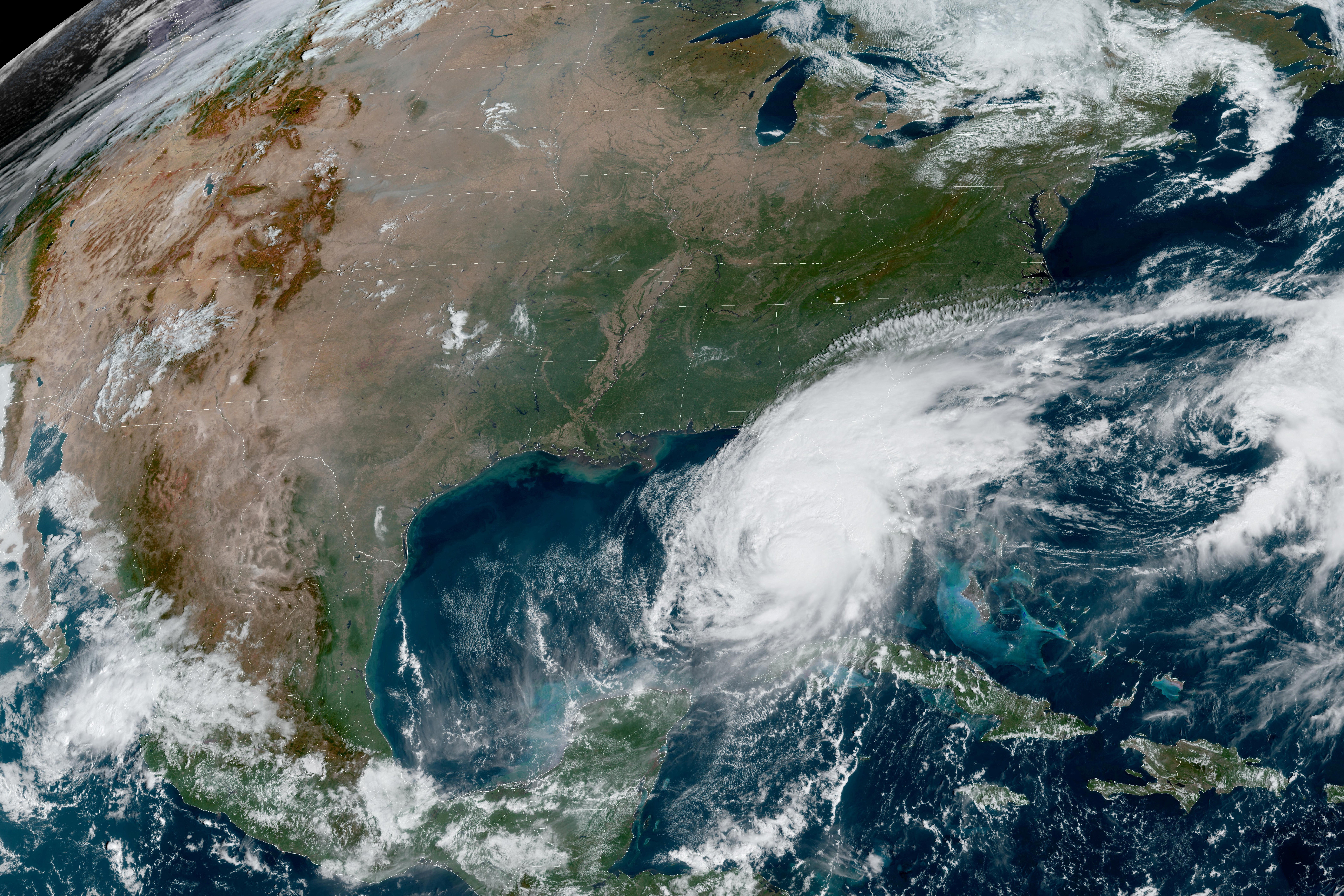
Your support helps us to tell the story
Our mission is to deliver unbiased, fact-based reporting that holds power to account and exposes the truth.
Whether $5 or $50, every contribution counts.
Support us to deliver journalism without an agenda.

Louise Thomas
Editor
Hurricane Milton intensified from a tropical storm into a Category 5 hurricane in just over 48 hours.
That is the fastest intensification from tropical storm to Category 5 observed in an Atlantic-forming hurricane, according to NASA.
Milton began forming on Saturday, October 5 and the National Weather Service classified it as a tropical storm only a few hours after its formation. By the following day — 24 hours after becoming a named storm — Milton had already increased in strength to a Category 1 hurricane.
From 1pm CDT on Sunday to 1pm CDT on Monday, Hurricane Milton picked up another 95mph (153kph). Typically, researchers will say a hurricane has undergone “rapid intensification” if it gains more than 35mph (56kph) in a 24 hour period. Milton’s intensification hit the benchmark for rapid intensification twice in the same 24 hour period.
The only hurricanes to intensify from Category 1 to Category 5 faster than Milton were Hurricane Wilma in 2005 and Felix in 2007, according to the National Hurricane Center.

On Monday, Hurricane Milton’s sustained winds peaked at 180mph, making it the strongest hurricane in the Gulf of Mexico since Hurricane Rita in 2005, and the fifth most intense hurricane ever recorded in the Atlantic.
The NCH warned that Milton may regain strength and increase in size just before it hits the densely populate Tampa Bay metro area.
K-12 schools in 43 of Florida’s 46 counties closed on Wednesday, and the Orlando International Airport has halted commercial passenger flights as of 8am.
“The airport, in collaboration with federal and airline partners, agreed to cease commercial operations to prevent aircraft from operating under unsafe weather conditions for landings and take-offs,” MCO said in a statement.
Tampa mayor Jane Castor told CNN that if residents choose to “stay in one of those evacuation areas, you’re gonna die”.
Hurrican Milton is arriving just a few days after Hurricane Helene, which was also considered a “historic” storm. Helene caused widespread damage throughout the southeast and killed at least 230 people.
Castor said Hurricane Helene was a “wake-up call” and feared that Hurricane Milton could be “literally catastrophic.”
The potential for hurricanes to be become even stronger than Milton and other massive storms have convinced some researchers that a “Category 6” is needed.
A recent study published argued that increasingly intense hurricanes, fueled by warming ocean waters thanks to the climate crisis increasing global temperatures, could warrant a Category 6. That distinction would be reserved for storms with sustained winds of more than 192 mph.
The study found that at least five storms since 1980, including Typhoon Haiyan and Hurricane Patricia, which they said would have qualified for a Category 6 ranking.







